In 1969, with the stroke of a governor’s pen, The University of Texas at Dallas started on a journey. During our first 50 years, we’ve taken countless steps forward and beamed with pride as our family, footprint and stature have grown. To celebrate our golden anniversary, this visual timeline highlights UT Dallas’ history and our remarkable transformation into one of the nation’s premier universities, poised to blaze an even brighter trail onward.
Decades of Distinction
The Early Years
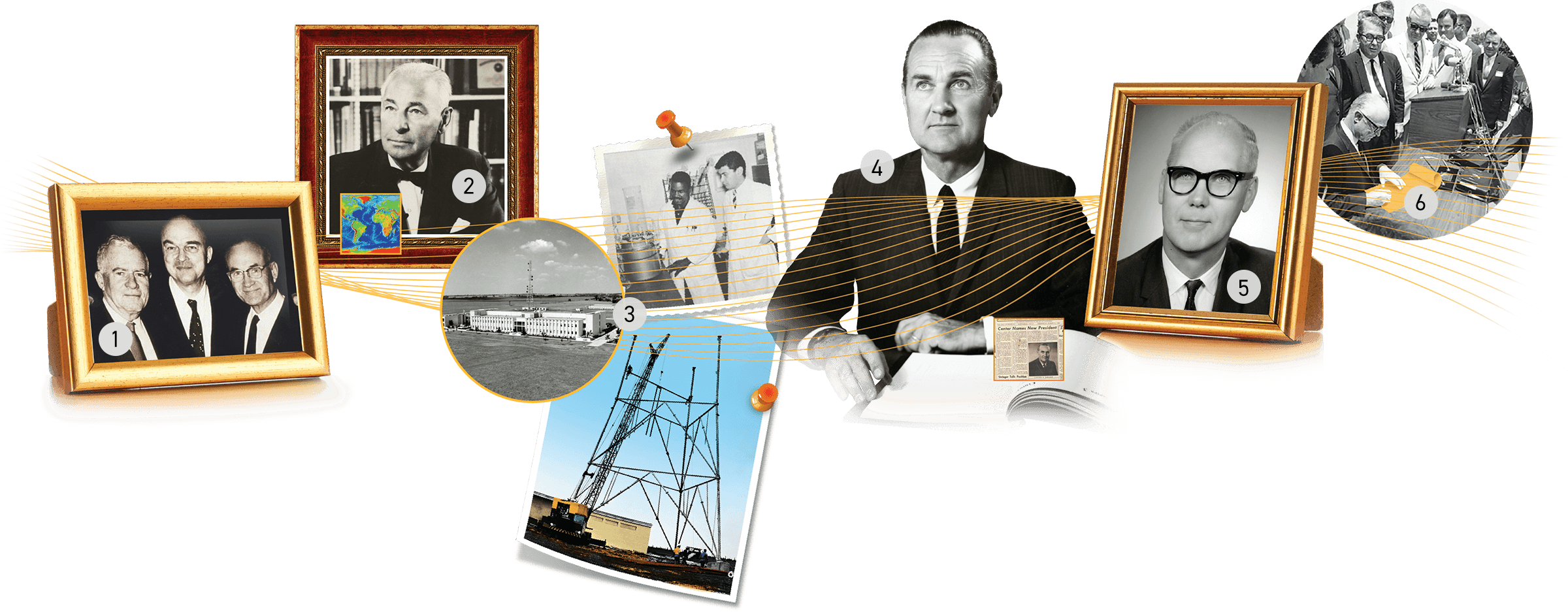

1961
UT Dallas owes its existence to three visionaries: Eugene McDermott, J. Erik Jonsson and Cecil H. Green1. They observe promising young Texans leaving the state to pursue education while the trio’s company, Texas Instruments Inc., struggles to import out-of-state talent to work at their Dallas-based headquarters. Hoping to create better higher education opportunities in North Texas, they establish the Graduate Research Center of the Southwest. This becomes the foundation for what will become The University of Texas at Dallas.
Lloyd V. Berkner2 becomes the first president of the Graduate Research Center of the Southwest. Elected to the National Academy of Sciences in 1948, the engineer and physicist joined the Texas Instruments board in 1957 and would go on to earn NASA’s highest civilian honor, the Public Service Medal. He was known as the Father of the International Geophysical Year, a program of research from mid-1957 through 1958 that among other things verified the existence of an oceanic mountain chain, which eventually led to the understanding of plate tectonics.

1964
The first facility on the present-day campus opens on Oct. 29 and is named the Founders Building3. Co-founders Erik Jonsson, Eugene McDermott and Cecil Green attend, and, in honor of this historic moment, Comets celebrate Founders Day every Oct. 29. The building will host faculty and visiting scholars from around the globe who conduct research in mathematics, physics, geosciences, atmospheric and space sciences, and biology — especially genetics and microbiology. These programs would form the core of the School of Natural Sciences and Mathematics.
1965
Gifford Johnson4 becomes the second president of the Graduate Research Center of the Southwest. He had been president of Ling-Temco-Vought from 1961 to 1964 and had previously been president of Chance Vought Aircraft Corp. He serves as president of the GRCSW until 1969, working closely with UT System Chancellor Harry Ransom and Erik Jonsson to establish UT Dallas.
1967
In an effort to better express its teaching and basic research functions, the Graduate Research Center of the Southwest changes its name to the Southwest Center for Advanced Studies.
1969
Dr. Francis (Frank) Johnson5 becomes acting president of the Southwest Center for Advanced Studies and later of UT Dallas. Johnson comes to the center with an impressive space career: He served in the U.S. Army Air Forces during World War II, designed instruments to study the atmosphere using German-made rockets captured after WWII, served on NASA and National Science Foundation advisory boards, and invented a lunar atmospheric pressure gauge, which flew on Apollo flights 12, 14 and 15.
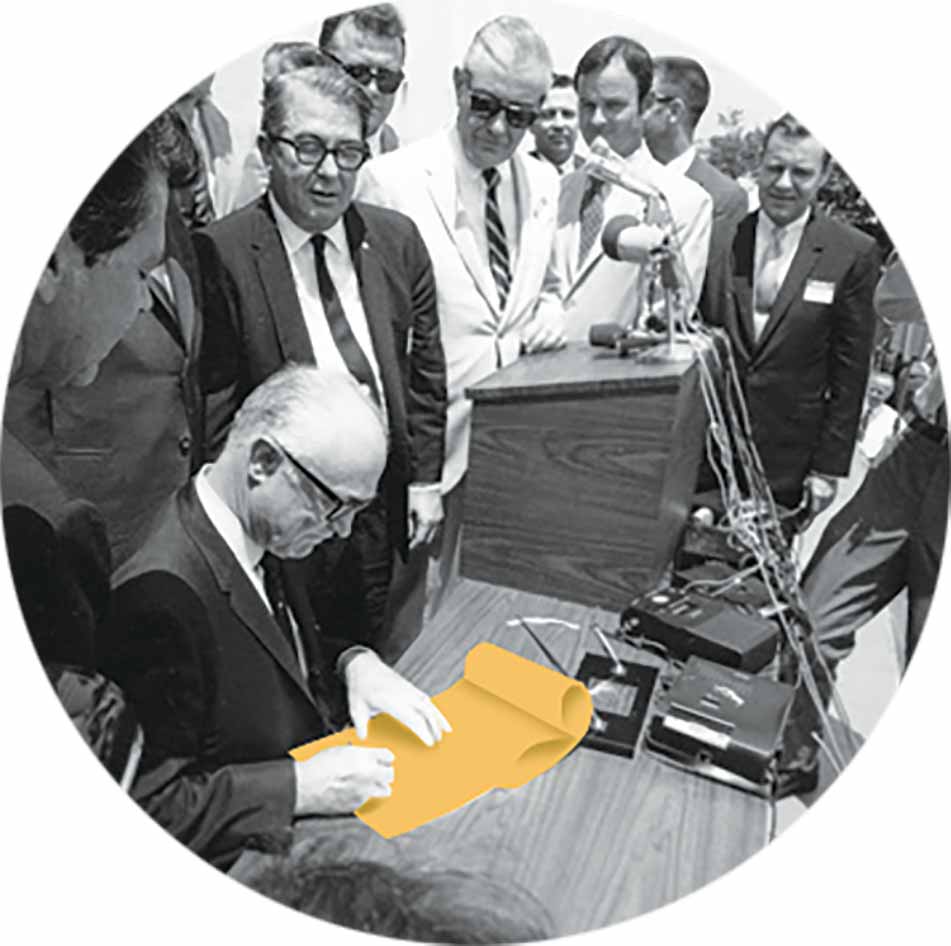
1969
The 61st Texas Legislature passes House Bill 303, establishing “a state-supported institution of higher education to be known as The University of Texas at Dallas.”6 Gov. Preston Smith signs the bill, with an effective date of September 1969. Sixty-two graduate students are admitted under the new banner.
The Seventies
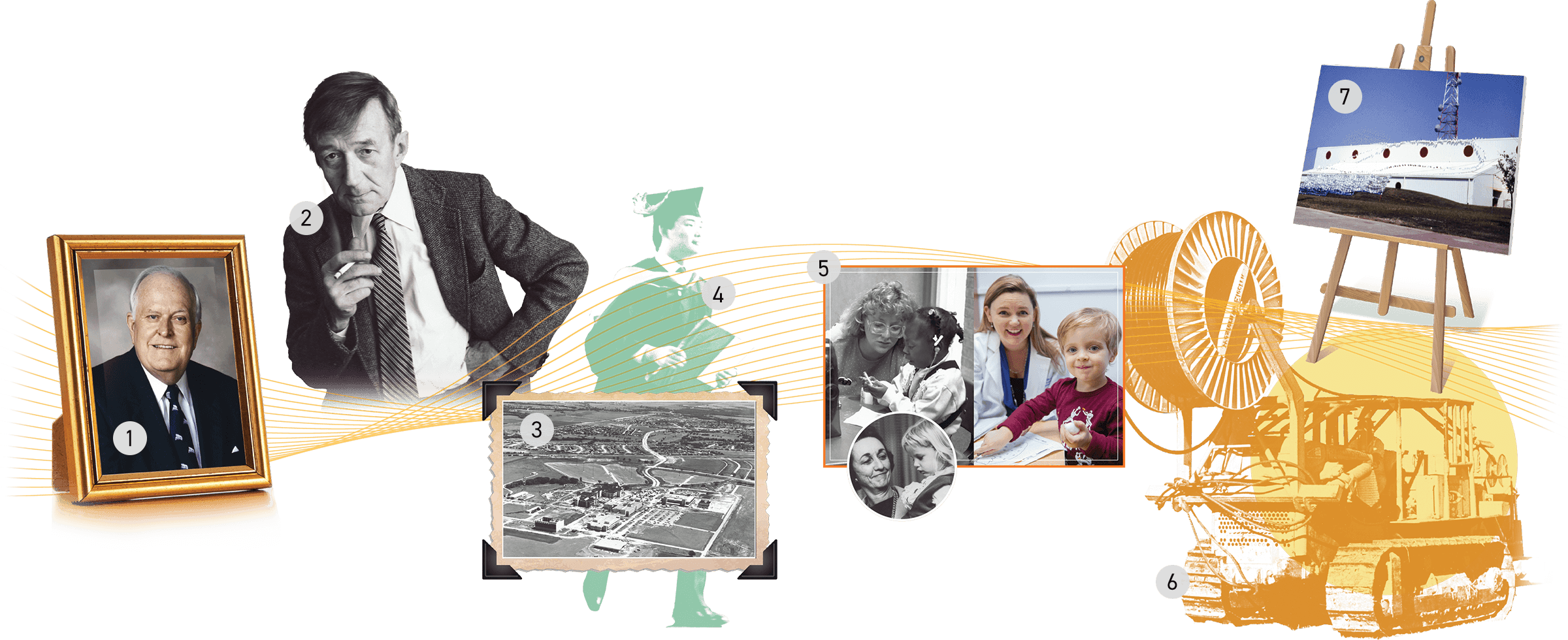
1971
Dr. Bryce Jordan1 becomes the first president of UT Dallas. Jordan previously served as acting president of UT Austin. He would hold the UT Dallas presidency for the next decade and go on to serve as vice chancellor for academic affairs for the UT System and president of Penn State.
1972
Dr. Polykarp Kusch2 becomes the first Nobel laureate on the UTD faculty. In 1955 he was jointly awarded the Nobel Prize in physics for his “precision determination of the magnetic moment of the electron,” a discovery that led to innovations in the field of quantum electrodynamics. A UT System Regental Professor, he served on the University’s physics faculty until he retired in 1982 as professor emeritus. The Polykarp Kusch Lecture Series began in 1985 when the University endowed the annual program in his honor.
The Southern Association of Colleges and Schools Commission on Colleges grants accreditation to UT Dallas, conferring approval on the quality and integrity of the University’s programs.
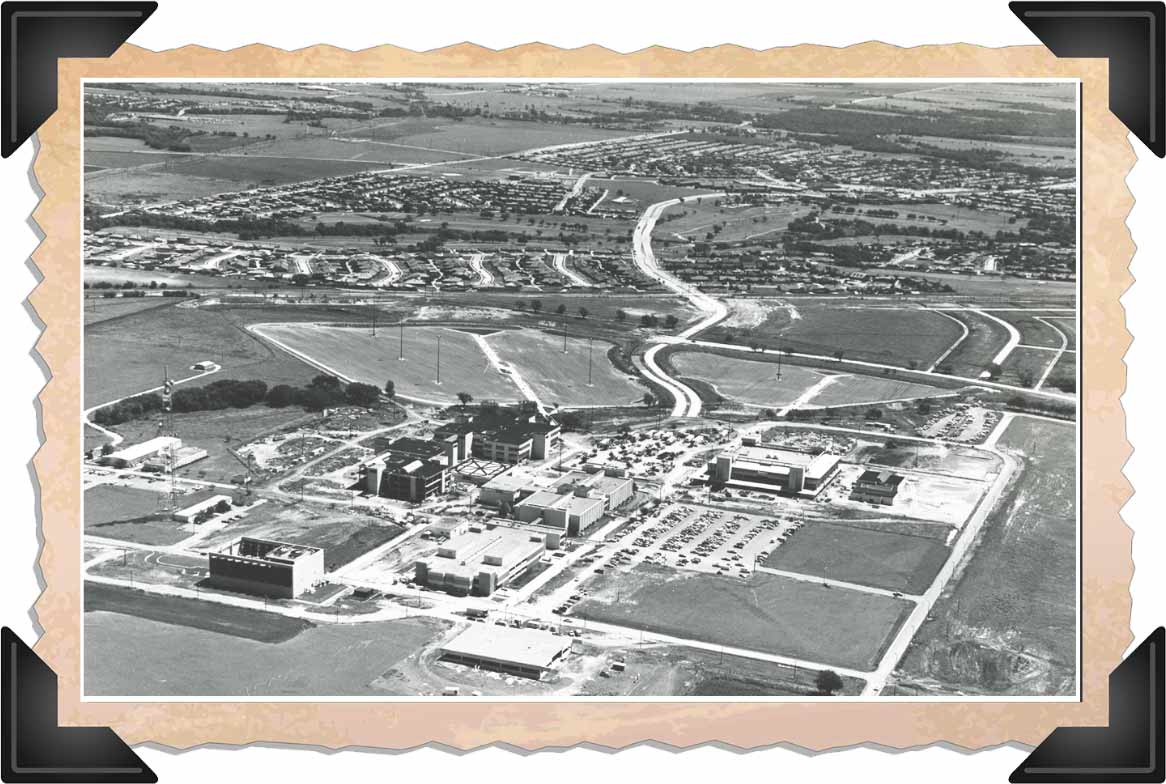
1973
UT Dallas receives a generous donation of 275 acres of land3 from the Hoblitzelle Foundation and the Texas Research Foundation, Karl Hoblitzelle’s brainchild. Though he died in 1967, his foundations consistently contributed to UT Dallas for decades.
Named for the Graduate Research Center of the Southwest’s first president, Lloyd V. Berkner Hall opens its doors.
UT Dallas holds its inaugural graduation ceremony4. The first graduates include Wang-Kong Lam in physics, Susan Seabury Mahlum in biology and Ronald Allan Hawkins in physics.

1975
The Callier Center for Communication Disorders5, located in Dallas, becomes part of the School of Human Development, now the School of Behavioral and Brain Sciences. Founded in 1963, the center is a national leader in providing in-depth, advanced evaluations and innovative treatments for children and adults with a wide variety of speech, language and hearing disorders.
UT Dallas establishes the schools of Arts and Humanities, General Studies, Human Development, Management, Natural Sciences and Mathematics, and Social Sciences.
1976
A flurry of construction6 leads to the opening of five new buildings on campus in 1975-76: the Eugene McDermott Library, Cecil H. Green Hall, Erik Jonsson Academic Center, Karl Hoblitzelle Hall and the University Theatre.
UT Dallas admits juniors and seniors for the first time for the 1975-76 academic year. The first class numbers 3,333, and the first bachelor’s degrees are awarded at spring commencement.
1978
The Alexander Clark Center and the Visual Arts Building open. The Art Barn7, as it is known, provides gallery space for art students. Both buildings will be torn down in the 2010s to accommodate more development.
The Eighties

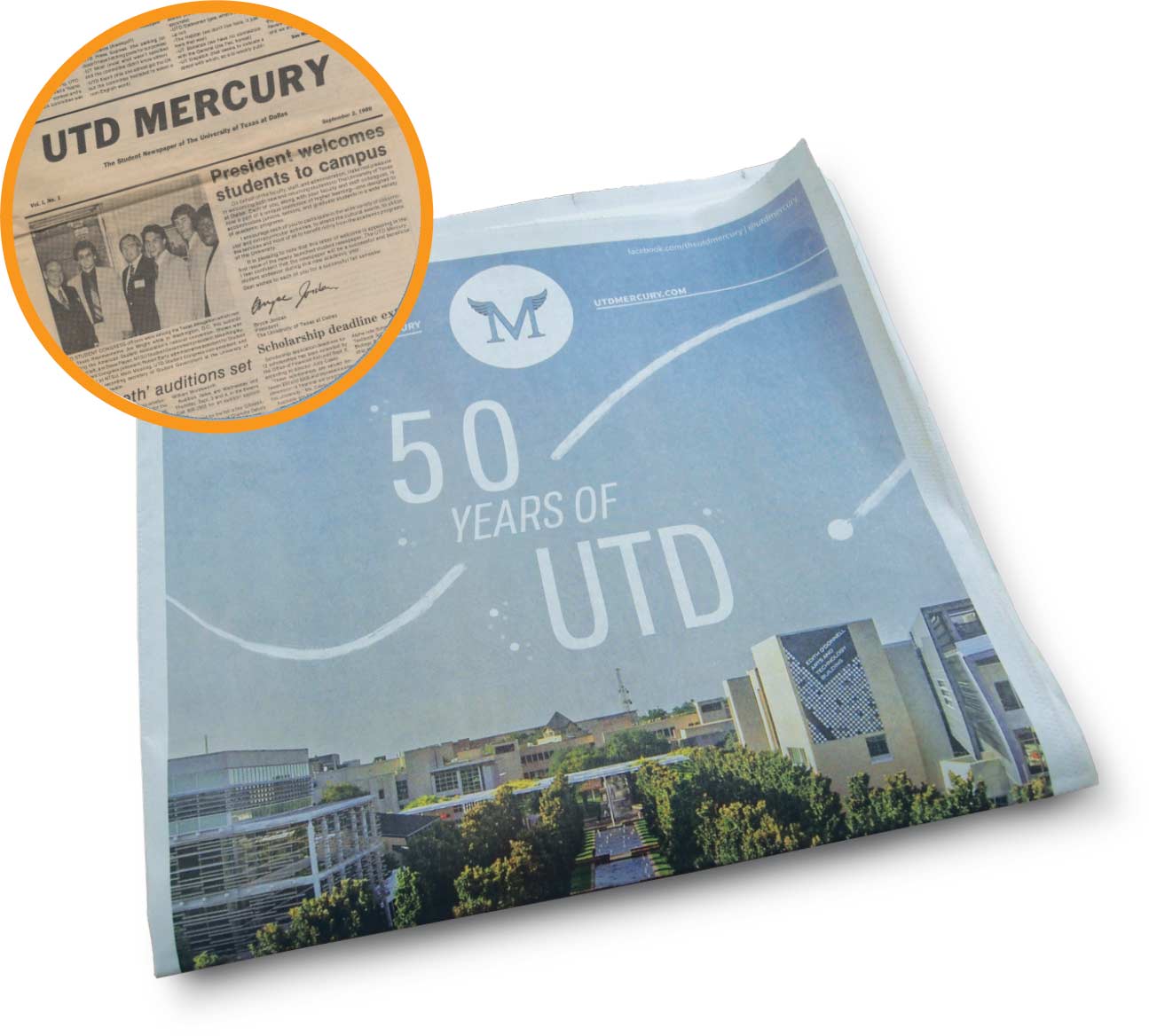
1980
The Mercury1 becomes the official student newspaper of UT Dallas. The publication is a perennial award winner in collegiate press competitions. The all-student staff publishes biweekly and also posts on the web.
The Center for Translation Studies is officially named. It was created in 1978 by Dr. Rainer Schulte, professor of arts and humanities and considered the founder of translation studies, to foster the study and practice of literary translation.
1981
Dr. Alexander L. Clark2 serves as acting president from September 1981 to May 1982. He joined UT Dallas as vice president for academic affairs in 1974, a post he held for 17 years. During that time, he was responsible for the recruitment of more than 130 faculty members. He helped create the academic organization of the University and greatly expanded its graduate research and instructional efforts. Prior to UTD, he was acting executive secretary of the National Research Council of the National Academy of Sciences and acting dean of the Lyndon B. Johnson School of Public Affairs at UT Austin.
Construction is complete on the Student Union, which opens its doors and garners an architectural award. Cecil H. Green dedicates the new building.
1982
Dr. Robert H. Rutford3 becomes the University’s second president, a position he holds until 1994. A glacial geologist and expert in geomorphology and Antarctica, Rutford led a party into the Antarctic Ellsworth Mountains in the 1960s. Several features are named for him: Mount Rutford, the highest peak, and Rutford Ice Stream, which he discovered, that drains part of the West Antarctic ice sheet into the sea. He also served as director of polar programs for the National Science Foundation, which awarded him its Distinguished Service Award. In 2007 he would be appointed president emeritus of UT Dallas.
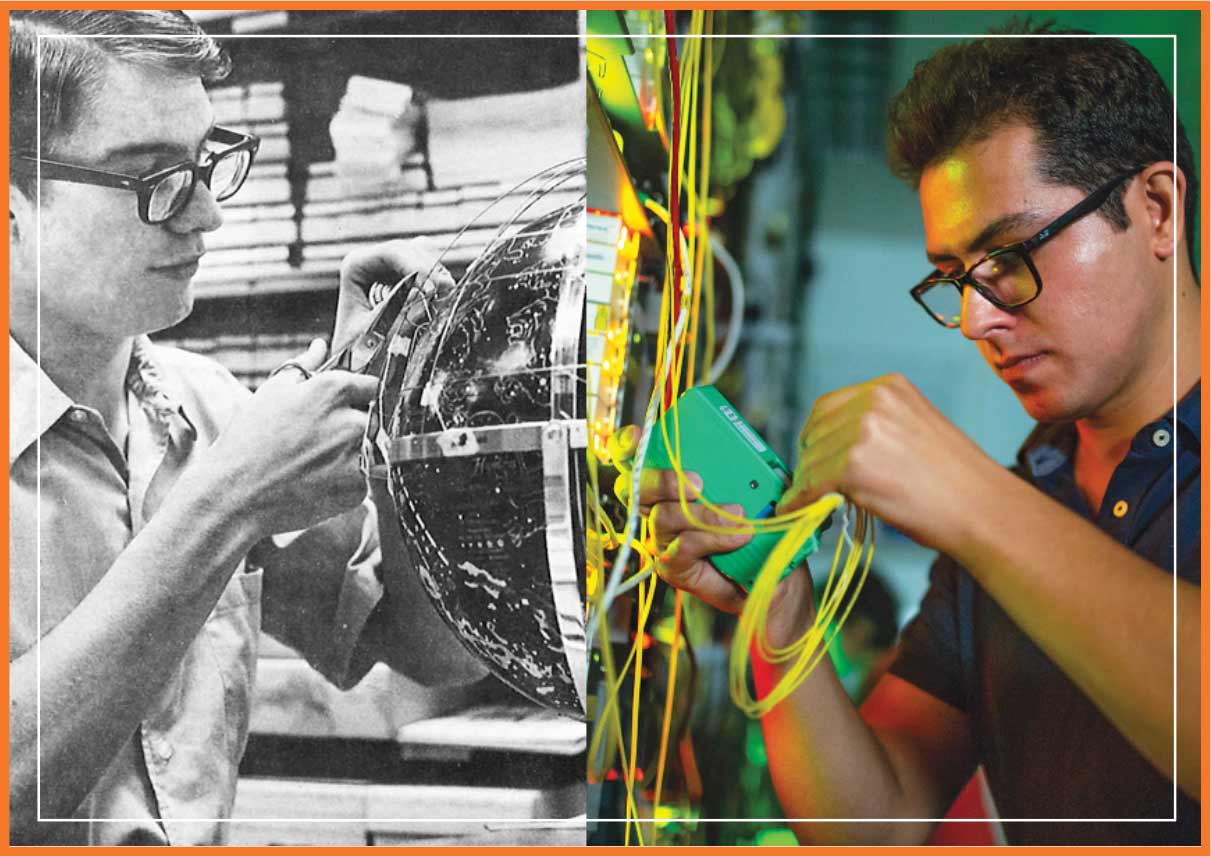
1986
With a boost from 100 area companies raising more than $20 million, the creation of the Erik Jonsson School of Engineering and Computer Science4 receives approval from the state, and the school admits its first engineering students. It is the second-largest school at the University and is named for the late Erik Jonsson, a former mayor of Dallas and co-founder of Texas Instruments and UT Dallas.
Dr. Zsuzsanna Ozsváth, a Hungarian-Jewish Holocaust survivor, translation expert
and professor of 19th- and 20th-century European literature and history, establishes the Holocaust Studies Program, which is later renamed the Ackerman Center for Holocaust Studies. UT Dallas is just one of two schools in the U.S. that offers graduate level courses in Holocaust studies.
1988
Dr. Brian J.L. Berry5 , future dean of the School of Economic, Political and Policy Sciences and a member of the National Academy of Sciences, receives the Royal Geographical Society’s highest honor, the Victoria Medal. In 2005 he would receive the Vautrin Lud Prize, considered the “Nobel Prize for Geography.” His urban and regional research in the 1960s sparked geography’s social-scientific revolution and made him the most-cited geographer for more than 25 years.
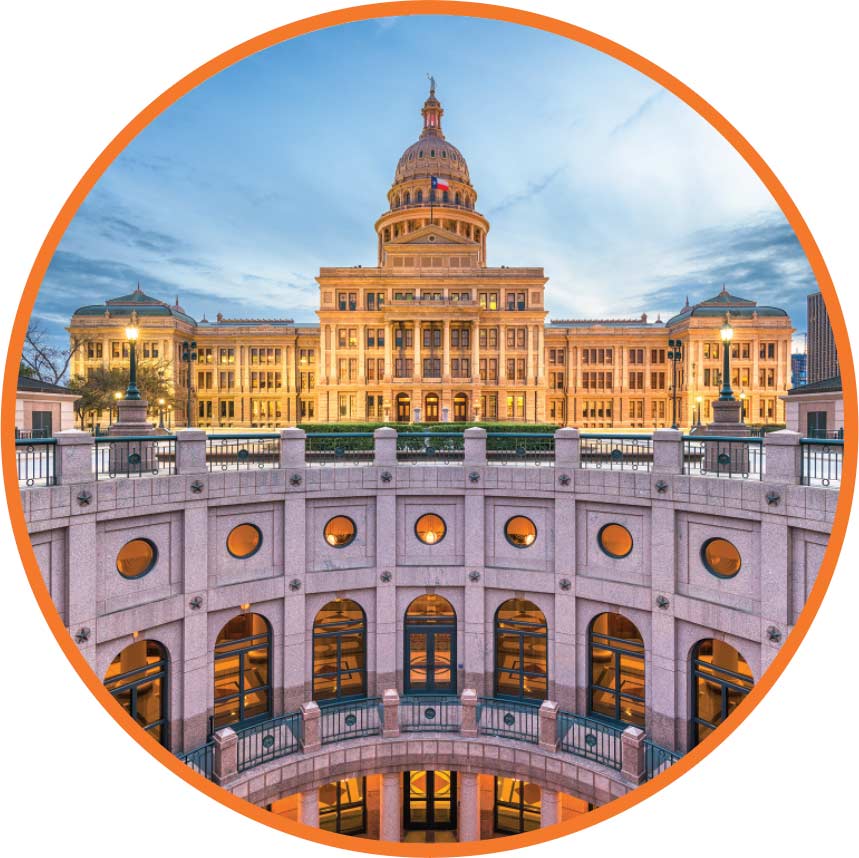
1989
The Texas Legislature6 passes House Bill 42, authorizing UT Dallas to enroll freshmen and sophomores, with emphasis on those wishing to pursue degrees in the natural sciences, mathematics and engineering. Enrollment is limited to 2,000 freshmen, and lower division enrollment cannot exceed 5,000. The legislation marks the expansion of UTD — on the occasion of its 20th anniversary — into a full-scale university and the distinction of being the only public university in Dallas County with freshmen through PhD candidates.
The Nineties

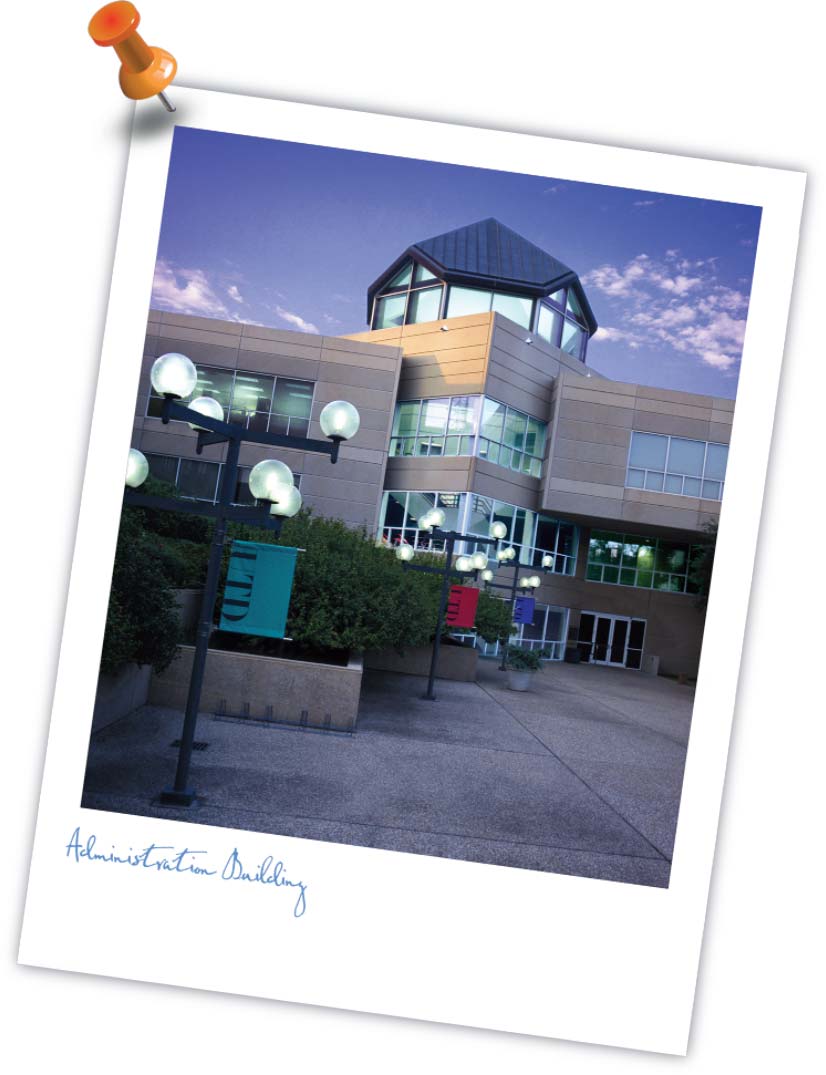
1990
The Administration Building1 opens. It was originally called the Multipurpose Facility and housed engineering programs and other departments. It now houses administrative offices and classrooms.
1992
The Engineering and Computer Science (ECS) Building2 and the Cecil and Ida Green Center for the Study of Science and Society are dedicated. ECS North is the first building along UT Dallas’ engineering corridor.
UT Dallas’ first Greek chapter — Kappa Sigma — joins the University, which today is home to 25 national Greek-letter fraternities and sororities representing organizations from the Interfraternity Council (men’s fraternities), Multicultural Greek Council (culturally based fraternities and sororities), National Pan-Hellenic Council (historically African American fraternities and sororities) and the College Panhellenic Council (women’s sororities).
1994
Dr. Franklyn Jenifer3 takes the helm as UT Dallas’ third president. He had formerly served as president of Howard University and as chancellor of the Massachusetts Board of Regents of Higher Education. During his tenure, UTD’s enrollment increases more than 60 percent, and the campus undergoes a dramatic physical transformation as major new facilities are constructed, including the School of Management, the Erik Jonsson School of Engineering and Computer Science and the Callier Center for Communication Disorders in Dallas. Jenifer is named president emeritus in 2005.
1996
The Chess Team4 debuts at UT Dallas, making it one of the first universities in the country to create a competitive, scholarship chess program. Since 2001, the team has secured four national collegiate championships and gone to the “Final Four” chess tournament, officially known as the President’s Cup, 16 times.
The Galerstein Women’s Center, named for UT Dallas’ first female dean, Dr. Carolyn Lipshy Galerstein, opens. Its mission is to advance the status and success of women and support the exploration of gender issues on campus, in the community and in society. Galerstein served as dean of the School of General Studies (now the School of Interdisciplinary Studies). The center is renamed the Galerstein Gender Center in 2017.5

1998
Temoc6 — “Comet” spelled backward — a blue-skinned, red-headed “comet in a human form” is adopted as the University’s first mascot. He was conceived by alumnus Aaron Aryanpur.
UTD Athletics joins the NCAA Division III American Southwest Conference. In just over 20 years, the intercollegiate athletics program now supports 14 varsity sports: men’s and women’s basketball, cross country, golf, soccer and tennis; baseball and softball; volleyball; and esports.
The Activity Center opens its doors. Surrounded by soccer fields, basketball courts, softball fields, tennis courts, a multipurpose field and a disc golf course, the facility includes a natatorium and fitness center. The building also houses club sports and intramural sports.
1999
UT Dallas alumnus Dr. Sandra Bond Chapman leads the newly established Center for BrainHealth7 in Dallas. The research institute is composed of independent labs that are responsible for more than 60 research projects investigating brain health, injury and disease. In 2017, an adjacent Brain Performance Institute opens to bring together the latest research and training techniques designed to improve cognitive skills and health for a range of clients, including professional athletes, executives, military veterans and teens.
The 2000s
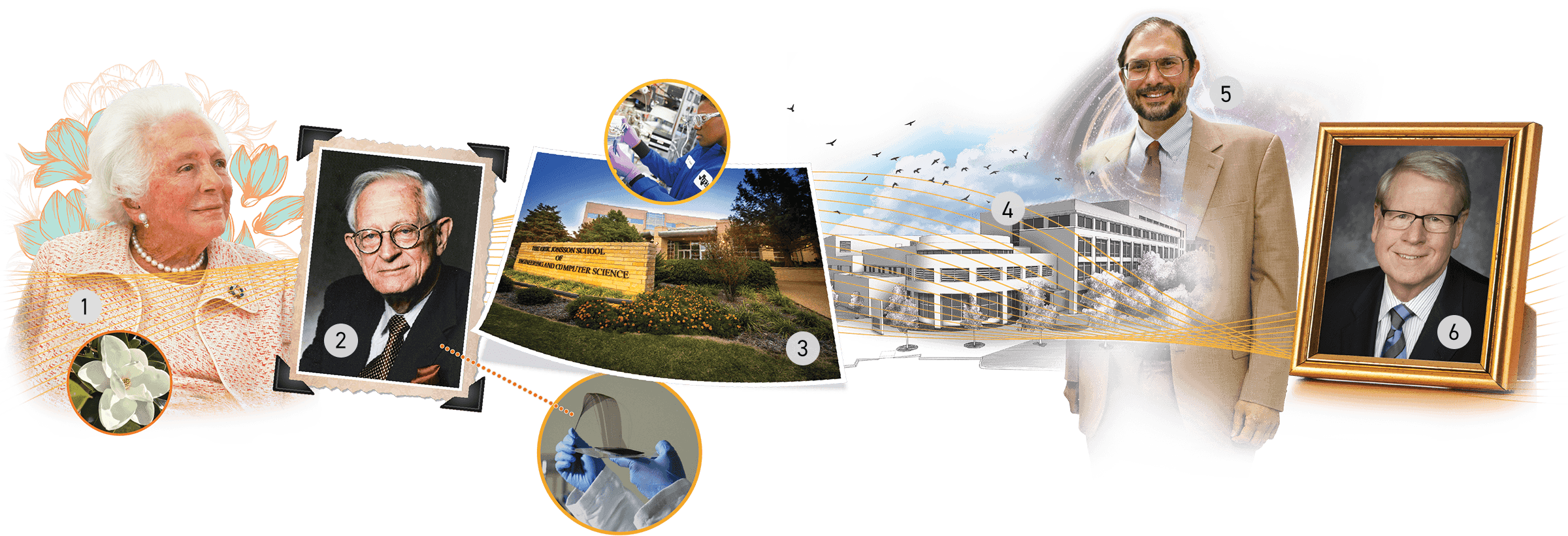
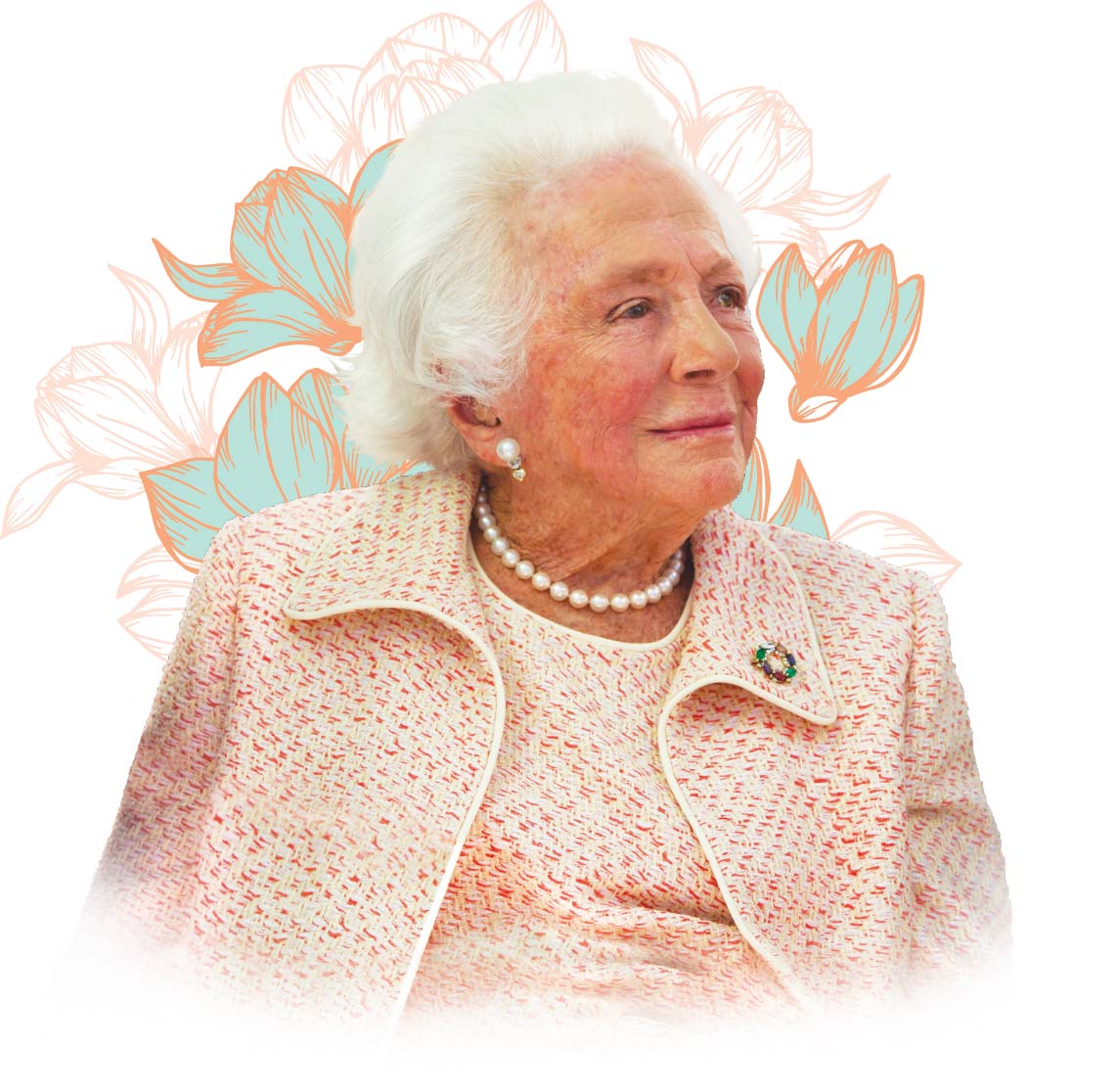
2000
Margaret McDermott1 donates $32 million — at the time, the largest gift in UT Dallas history — to establish the Eugene McDermott Scholars Program, a highly competitive program that provides scholars with leadership, cultural and travel opportunities to enrich their academic experience. Because of her generosity, all McDermott Scholars attend UTD on a full scholarship with a stipend.
2001
The NanoTech Institute begins with the recruitment of Dr. Ray Baughman, the Robert A. Welch Distinguished Chair in Chemistry. With the later appointments of Dr. Alan MacDiarmid, a 2000 Nobel laureate in chemistry2 “for the discovery and development of conductive polymers,” and others, the institute expands. Nanotechnology is the study of the control of matter on an atomic and molecular scale — generally 100 nanometers or smaller — and involves developing materials or devices within that size range. In 2007, the research center is renamed the Alan G. MacDiarmid NanoTech Institute in his memory.
2002
The Engineering and Computer Science South Building3, a three-story, 152,000-
square-foot add-on to the University’s existing engineering facility, contains the Texas Instruments Auditorium, as well as classrooms, offices and equipment.
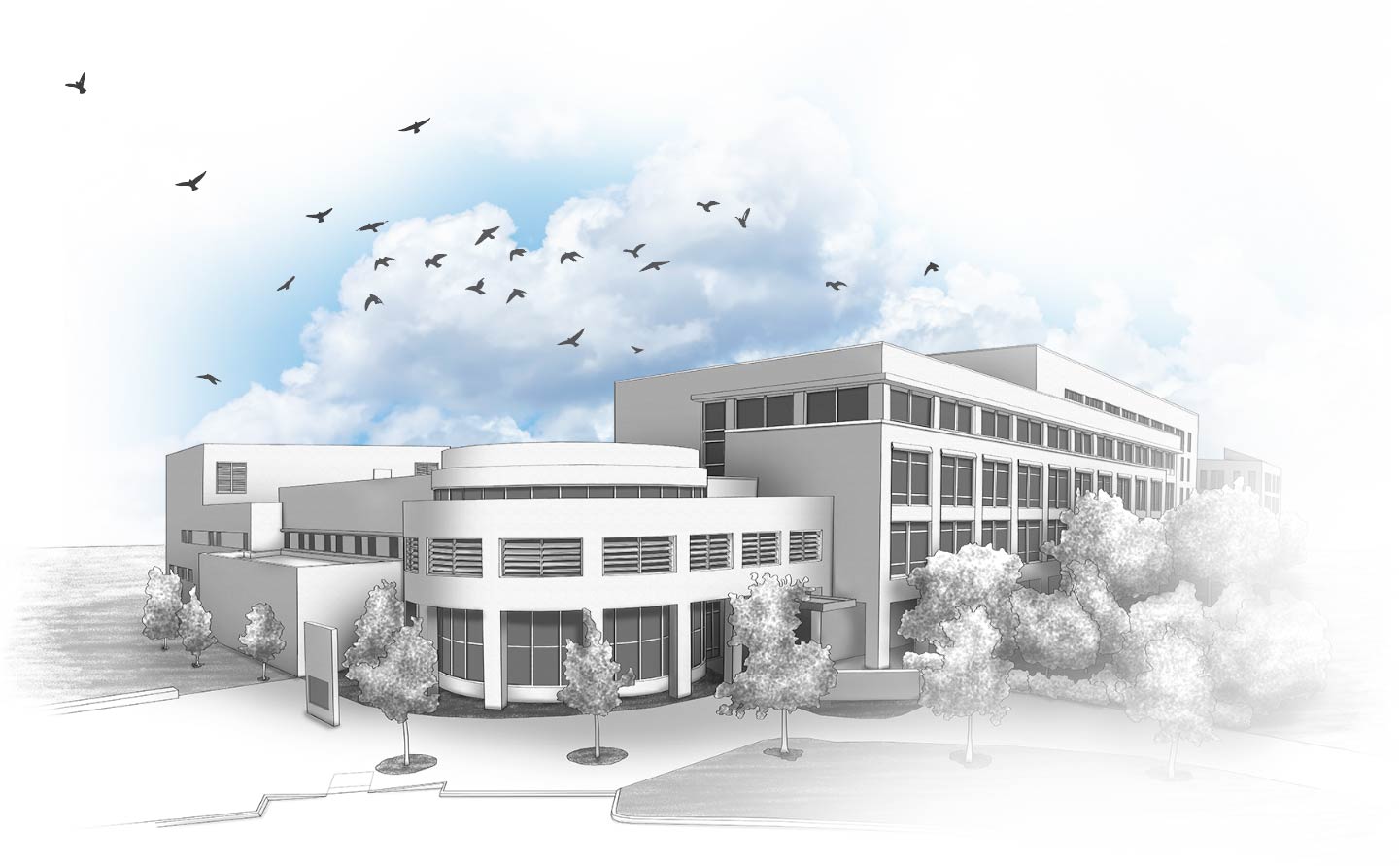
2003
The new 204,000-square-foot School of Management4 building features 29 classrooms, two computer labs, a 350-seat auditorium, breakout spaces for student groups, desktop internet access in every classroom, wireless network access throughout, and audiovisual and online learning support in every classroom.
The School of Human Development changes its name to the School of Behavioral and Brain Sciences. The school is home to the Callier Center for Communication Disorders, the Center for BrainHealth, the Center for Vital Longevity and the Center for Children and Families.
2004
A third Nobel laureate joins UT Dallas. Physics pioneer Dr. Russell A. Hulse5 received the Nobel Prize in physics in 1993 “for the discovery of a new type of pulsar, a discovery that has opened up new possibilities for the study of gravitation.” He begins his affiliation with UT Dallas as a visiting professor of physics and science and math education and will later be named Regental Professor and associate vice president for strategic initiatives in 2007. He is the founding director of the Science and Engineering Education Center at UT Dallas.
2005
Dr. David E. Daniel6 becomes the fourth president of UT Dallas after serving as dean of engineering at the University of Illinois at Urbana-Champaign and election to the National Academy of Engineering. After his arrival, the University triples its research expenditures, initiates or completes $600 million in construction, adds 40 new degree programs and raises more than $210 million in private funds. After a decade, Daniel becomes deputy chancellor of the UT System and eventually is named president emeritus of UT Dallas.
2006
The School of Social Sciences is renamed the School of Economic, Political and Policy Sciences, a decision that “emphasizes commitment to strong analytic foundations, interdisciplinary scholarship and research, and a broad and deep interface with public policy.”
2007
The Natural Science and Engineering Research Laboratory (NSERL) is dedicated. The four-story, 192,000-square-foot research facility is home to faculty and scientists from electrical engineering, materials science and engineering, chemistry, biology, and behavioral and brain sciences. Laboratories within NSERL provide space for scientists and engineers ranging from synthetic chemists who require significant fume hood space to electrical engineers who need open labs for large equipment.
2008
The School of General Studies is renamed the School of Interdisciplinary Studies and offers programs in health care, American studies and exercise studies. The school also includes gender studies, the teacher certification program, the Academic Bridge Program and others.
The 2010s

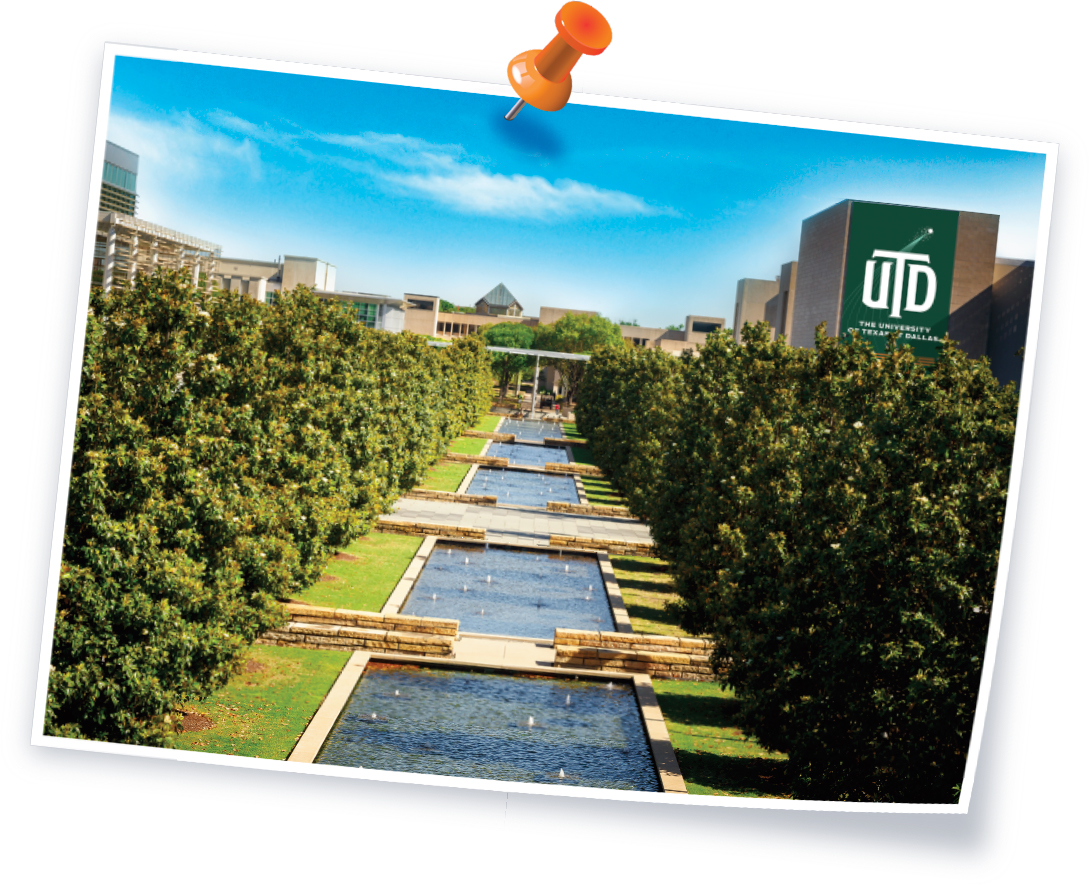
2010
The first phase of the seven-year-long Campus Landscape Enhancement1 project, funded with $50 million from Margaret McDermott, is dedicated. Some 5,000 trees and shrubs are planted, and over the next few years, five reflecting pools lined with magnolia trees, a wisteria-covered trellis, circular fountain and mister are added. Begun in fall 2008, the project is led by landscape architect Peter Walker. The UT System would later name the Margaret McDermott Mall and Trellis Plaza in her honor.
The Science Learning Center opens for primarily undergraduate math and science courses. The $29 million facility includes a lecture hall, instructional labs and offices for faculty and tutors.
UT Dallas’ first LEED (Leadership in Energy and Environmental Design) Platinum facility, the Student Services Building, opens. The four-story, 74,000-square-foot building is only the 11th academic structure in Texas to be certified by Green Building Certification Inc. and the first Platinum facility in the UT System. A new addition will be added in 2017. 2
Dr. Denise C. Park is founding director of the Center for Vital Longevity, an enterprise dedicated to research on the aging brain, memory, cognitive aging and Alzheimer’s disease. Six research laboratories headed by distinguished scientists are dedicated to a wide variety of studies aimed at understanding the aging mind, including the Dallas Lifespan Brain Study.
2011
A groundbreaking ceremony marks the eight-month construction of the Visitor Center and University Bookstore. The 33,000-square-foot building contains a gateway facility for visitors, as well as the campus bookstore, coffee shop, technology store and copy center.
UT Dallas alumnus Naveen Jindal presents the University with its single-largest alumni gift, part of a joint $30 million gift presented with fellow alumni Charles Davidson and Nancy Gundy Davidson to the School of Management. The school is renamed the Naveen Jindal School of Management, and the Charles and Nancy Davidson Honors Program is established. The following year, a 108,000-square-foot addition opens for the Jindal School.
2013
The Edith O’Donnell Arts and Technology Building3 is dedicated in honor of the Dallas philanthropist. The 155,000-square-foot, $60 million building houses programs in visual arts, emerging media technology and multimedia communications, as well as provides a 1,200-seat auditorium. Edith O’Donnell makes a $17 million contribution in 2014 to create the Edith O’Donnell Institute of Art History.
2014
UT Dallas opens a studio for UTDesign4, a program that brings together engineering and design students with corporate sponsors seeking solutions to their research problems. The studio includes a computer lab, machine shop and more than $550,000 in state-of-the-art equipment donated by local companies.
Realize the Vision: The Campaign for Tier One & Beyond, the University’s first comprehensive campaign, surpasses its goal, raising $273 million for faculty research and programs that will be vital to UT Dallas’ quest to become a Tier One university.
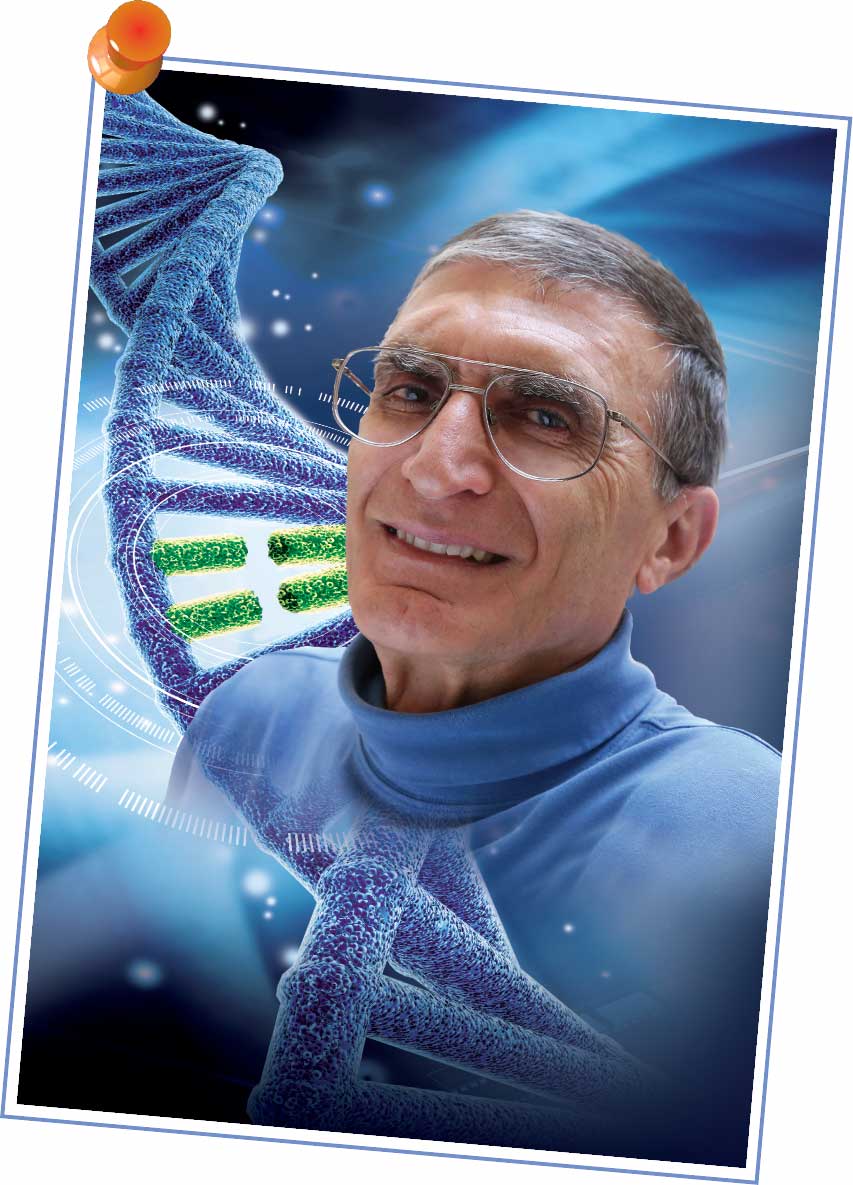
2015
Dr. Aziz Sancar5, who earned his PhD in molecular and cell biology from UT Dallas in 1977, becomes the first alum to win a Nobel Prize. The Nobel laureate in chemistry won “for mechanistic studies of DNA repair.”
The Board of Regents approves the merger of two successful arts and technology programs into a single school – the School of Arts, Technology, and Emerging Communication.
Dr. Hobson Wildenthal6 is appointed interim president. Wildenthal joined UTD in 1992 as vice president for academic affairs. A champion of academic excellence, he was instrumental in adopting a core curriculum that addressed key components of undergraduate education when the University was just beginning to admit freshmen and sophomores in the early 1990s. He became executive vice president and provost in 1999, positions he would hold for the next two decades.

2016
Dr. Richard C. Benson7 is appointed the fifth president of UT Dallas. An engineer with a focus on the mechanics of highly flexible structures, Benson was head of mechanical and nuclear engineering at Pennsylvania State University and then dean of Virginia Tech’s College of Engineering. With a self-described “appreciation for all things artistic and beautiful,” he shares his vision to not only maintain the University’s excellence in science, math and technology but also to boost the arts and humanities.
The Carnegie Classification of Institutions of Higher Education recognizes UT Dallas as an R1 institution – a classification reserved for doctoral institutions with “very high research activity.” UTD is among the top 131 universities in the country with this rating.
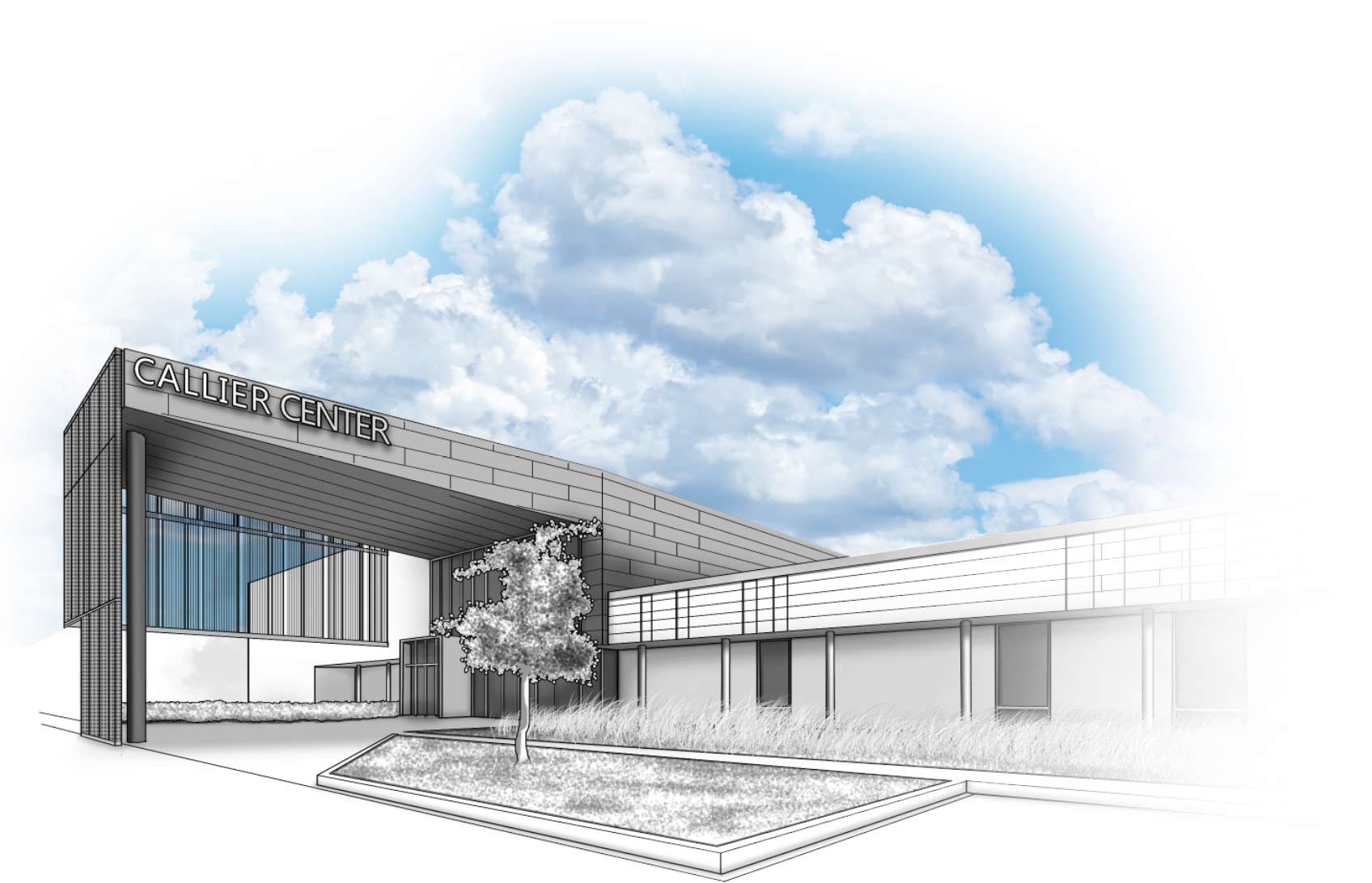
UT Dallas completes an expansion of the Callier Center for Communication Disorders8 on its Richardson campus. The $22 million facility provides additional space for the acclaimed program. About 4,000 patients in an estimated 40,000 clinical visits are seen annually at Callier’s Dallas and Richardson locations.
The 220,000-square-foot Bioengineering and Sciences Building opens. It houses collaborative labs for bioengineering and neurosciences, as well as research space for programs in biology and chemistry. It is UTD’s largest academic building.
2017
The Davidson-Gundy Alumni Center9is named for alumni Nancy Gundy Davidson and Charles “Chuck” Davidson in recognition of their $15 million gift for the 30,246-square-foot facility designed to deepen bonds between students and the University’s more than 110,000 alumni.
Margaret McDermott creates an endowment of $10 million for undergraduate research and, at her request, the Honors College, which was established in 2015, is renamed the Hobson Wildenthal Honors College.
2018
UT Dallas achieves the critical benchmark criteria required to qualify for funding from the National Research University Fund (NRUF)10, an exclusive source of research support available to the state’s “emerging research universities.” UTD is the third university and the youngest in the state to qualify for NRUF.
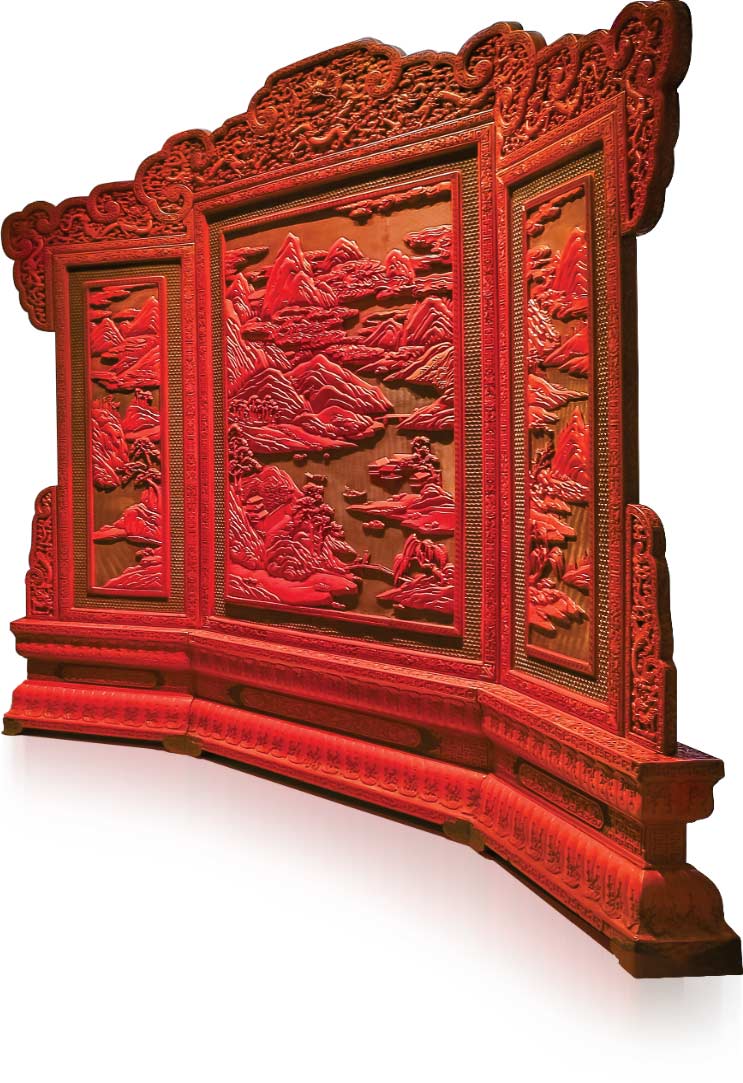
The Trammell and Margaret Crow family donate the entire collection of the Trammell and Margaret Crow Museum of Asian Art, together with $23 million of support funding, to create the Trammell and Margaret Crow Museum of Asian Art of The University of Texas at Dallas11. The University will continue to operate the Crow Museum in the downtown Dallas Arts District, while using the gift funding for design and construction of a second museum on the UTD campus. The Crow collection includes 1,000 objects of Asian art, from the ancient to the contemporary.
A monumental gift of over 400 works of Swiss art, considered the single-largest donation ever made to the University as well as the largest gift of art to any school in the UT System, is made by Richard Barrett. The Barrett Collection of paintings, sculpture, drawings and prints is the only definitive collection of Swiss art outside of Switzerland.
Where the Alexander Clark Center once stood, the new Engineering and Computer Science West Building12 opens. The four-story, 200,000-square-foot facility features state-of-the-art labs, classrooms and office space. The $110 million student-centric structure primarily houses the Department of Mechanical Engineering and includes a 300-seat auditorium.




